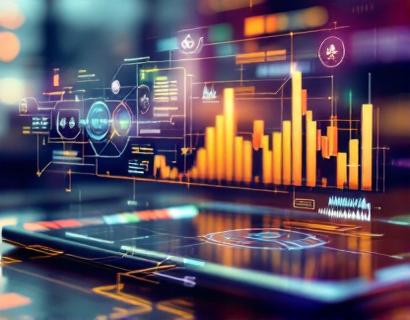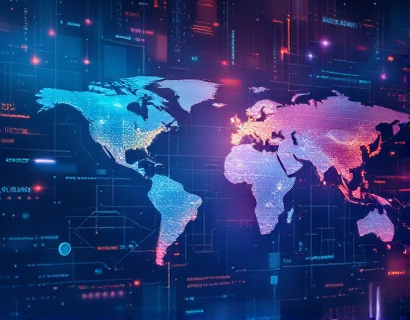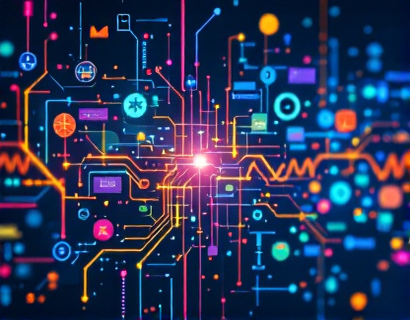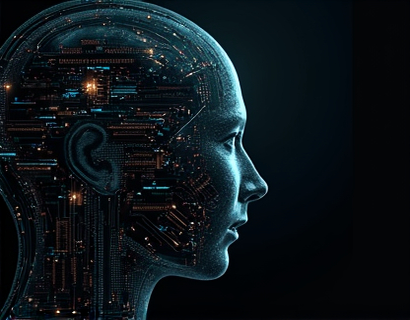Transforming Digital Interactions: The Synergy of Crypto and AI
The intersection of cryptocurrency and artificial intelligence (AI) is revolutionizing the digital landscape, offering unprecedented opportunities for enhanced user engagement and innovative solutions. This convergence is not just a technological curiosity but a transformative force that is reshaping how we interact with digital platforms and services. As we delve into the latest advancements, it becomes clear that the integration of crypto and AI is paving the way for a more secure, efficient, and personalized digital experience.
Enhanced Security through Cryptographic Techniques
One of the most significant contributions of cryptocurrency to digital interactions is the enhancement of security protocols. Traditional online systems often struggle with data breaches and unauthorized access, but blockchain technology, the backbone of cryptocurrencies, provides a robust solution. Blockchain's decentralized and immutable ledger ensures that transactions are secure and tamper-proof. This level of security is crucial for user trust, especially in applications where sensitive information is handled.
AI complements this by adding another layer of security through advanced threat detection and response systems. Machine learning algorithms can analyze patterns and identify anomalies in real-time, allowing for proactive measures against potential security threats. This synergy ensures that user data remains protected, fostering a safer environment for digital interactions.
Personalized User Experiences through AI
The true power of AI lies in its ability to analyze vast amounts of data and derive meaningful insights. In the context of digital platforms, this means creating highly personalized user experiences. By leveraging AI, services can tailor content, recommendations, and interactions based on individual user preferences and behaviors. This level of personalization not only enhances user satisfaction but also increases engagement and retention rates.
For instance, AI-driven chatbots can provide instant and context-aware support, resolving user queries efficiently and effectively. These chatbots can learn from past interactions to improve their responses over time, offering a seamless and human-like experience. The combination of crypto and AI ensures that these interactions are not only personalized but also secure, as user data is managed through blockchain technology.
Decentralized Applications and User Empowerment
Decentralized applications (dApps) are a prime example of how crypto and AI can transform digital interactions. Unlike traditional applications that rely on centralized servers, dApps operate on blockchain networks, giving users greater control over their data and interactions. This decentralization empowers users by removing intermediaries and reducing the risk of data manipulation.
AI enhances dApps by providing intelligent and adaptive functionalities. For example, AI can optimize the performance of dApps by dynamically adjusting resources based on user demand, ensuring smooth and efficient operations. Additionally, AI-driven analytics can help developers understand user behavior and preferences, enabling them to refine and improve their applications continuously.
Use Cases of Decentralized Applications
One notable use case is in the finance sector, where decentralized finance (DeFi) platforms are redefining traditional banking. These platforms offer a range of financial services, from lending and borrowing to trading and lending, all powered by smart contracts and blockchain technology. AI algorithms can enhance these services by providing predictive analytics for market trends, risk assessment, and automated trading strategies.
Another use case is in the realm of digital identity verification. Blockchain-based identity systems combined with AI can create secure and verifiable digital identities, reducing the risk of fraud and enhancing user control over personal information. This is particularly valuable in industries such as healthcare, where secure and accurate identity verification is critical.
Enhancing Content Creation and Distribution
The creative industry is also benefiting from the convergence of crypto and AI. Content creators can leverage blockchain to monetize their work directly, without relying on intermediaries like streaming platforms or publishers. Smart contracts ensure that creators receive fair compensation for their content, while AI can help in content recommendation and distribution.
AI-driven algorithms can analyze user preferences and behavior to recommend content that resonates with specific audiences. This not only improves user engagement but also helps creators reach their target demographics more effectively. Moreover, blockchain ensures that content ownership and rights management are transparent and secure, reducing disputes and ensuring fair distribution of revenue.
NFTs and AI-Generated Art
Non-fungible tokens (NFTs) have gained significant traction as a way to represent unique digital assets. When combined with AI, the potential for creative expression expands exponentially. AI can generate unique pieces of art, music, and even code for NFTs, offering artists new tools to create and innovate. These AI-generated NFTs can be sold on blockchain marketplaces, providing a new revenue stream for creators and collectors alike.
The authenticity and scarcity guaranteed by blockchain make NFTs a valuable asset, while AI adds a layer of creativity and uniqueness. This synergy is not only transforming the art world but also opening up new opportunities in gaming, virtual reality, and other interactive media.
Optimizing Business Operations with AI and Crypto
Beyond consumer-facing applications, the integration of crypto and AI is also revolutionizing business operations. Companies can utilize blockchain for secure and transparent supply chain management, ensuring the authenticity and provenance of products. AI can optimize various aspects of business processes, from inventory management to customer service, leading to increased efficiency and cost savings.
For instance, AI-powered predictive maintenance can reduce downtime and maintenance costs by forecasting equipment failures before they occur. Blockchain can ensure that all transactions and data related to maintenance are recorded securely and transparently, enhancing trust and accountability.
Tokenization of Assets
Tokenization, the process of converting assets into digital tokens on a blockchain, is another area where crypto and AI intersect to transform business operations. By tokenizing assets such as real estate, art, or even intellectual property, companies can increase liquidity and accessibility. AI can further enhance this process by analyzing market trends and optimizing token pricing, ensuring that assets are valued fairly and efficiently.
For example, in the real estate sector, tokenization can break down barriers to entry by allowing fractional ownership of properties. AI can analyze market data to determine optimal token prices and predict future value trends, providing investors with valuable insights. This combination not only democratizes access to investment opportunities but also enhances the overall efficiency of the market.
Challenges and Considerations
While the potential benefits of integrating crypto and AI are substantial, there are also challenges and considerations that need to be addressed. Regulatory frameworks are still evolving, and the lack of clear guidelines can create uncertainty for businesses and developers. Ensuring compliance with existing laws while innovating in this space requires careful navigation.
Another challenge is the technical complexity involved in integrating blockchain and AI systems. Developers need to possess a deep understanding of both technologies to create robust and scalable solutions. Additionally, the energy consumption associated with blockchain, particularly proof-of-work mechanisms, raises environmental concerns that need to be addressed through more sustainable practices.
Future Outlook
Looking ahead, the convergence of crypto and AI is poised to drive even more innovative solutions. As technology advances, we can expect to see more sophisticated AI algorithms that can operate more efficiently on blockchain networks. The development of more energy-efficient consensus mechanisms will also play a crucial role in making these systems more sustainable.
Moreover, the rise of Web3, a decentralized internet powered by blockchain, AI, and other emerging technologies, promises a future where users have greater control over their digital lives. This shift will not only enhance user engagement but also foster a more inclusive and equitable digital ecosystem.
In conclusion, the integration of cryptocurrency and AI is transforming digital interactions in profound ways. From enhancing security and personalization to enabling decentralized applications and optimizing business operations, the synergy between these technologies is reshaping the digital landscape. As we continue to explore and harness this potential, the future of digital engagement looks brighter and more promising than ever.










































